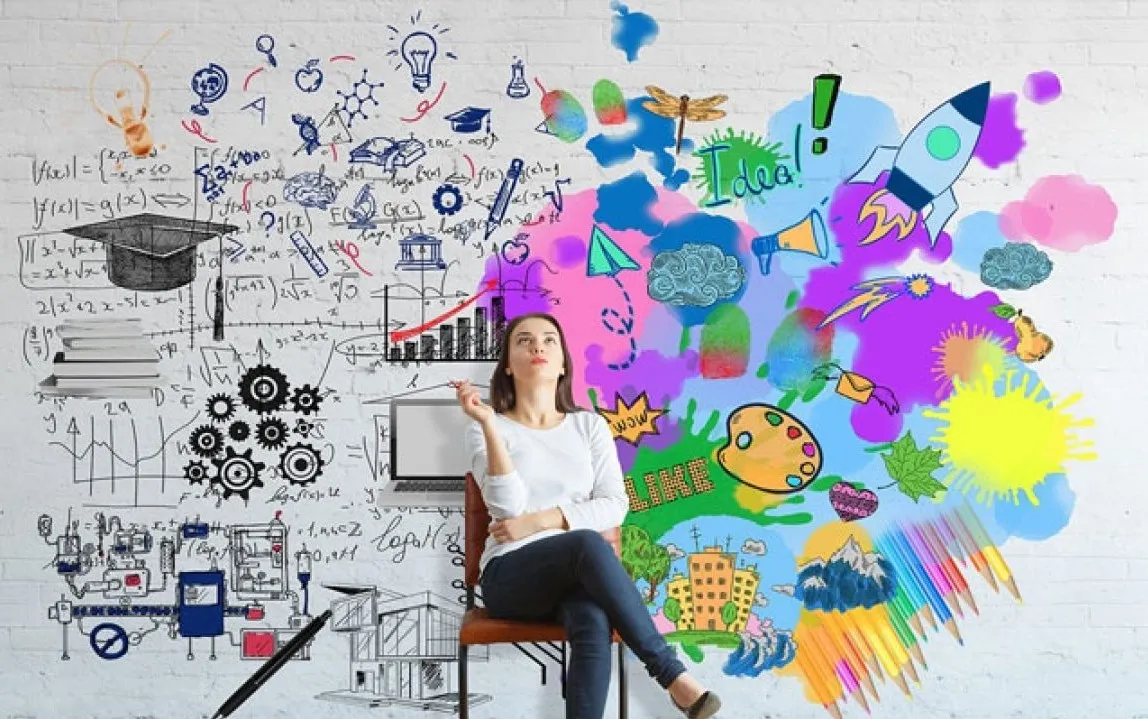
In the rapidly evolving realm of graphic design, where pixels meet creativity, the concept of “digital dreamscapes” is carving out a niche of its own. These dreamscapes represent a canvas where designers push the boundaries of imagination and technology, creating visually stunning and immersive experiences. This article explores the evolution, techniques, and impact of digital dreamscapes in modern graphic design.
The Evolution of Digital Dreamscapes
From Traditional to Digital: A Paradigm Shift
Graphic design has come a long way from its traditional roots, which predominantly involved print media. With the advent of digital technology, designers gained newfound freedom and tools to experiment with. The transition to the digital era marked the beginning of digital dreamscapes.
Traditional graphic design was constrained by physical limitations and static mediums. However, digital design introduced a dynamic element, enabling designers to play with motion, interactivity, and a multitude of visual effects. The transition was not just a shift in tools but a profound transformation of the design philosophy itself.
The Pioneers of Digital Dreamscapes
The emergence of virtual dreamscapes owes a good deal to the pioneering designers who dared to dream beyond the confines of the conventional. Artists like John Maeda, acknowledged for his fusion of art and technology, paved the way for others to explore the uncharted territories of virtual design. Their experiments with interactive installations, kinetic typography, and generative artwork laid the foundation for what we now understand as virtual dreamscapes.
Techniques and Tools in Digital Dreamscapes
Responsive Design: Shaping the User Experience
In an international fashion ruled through multiple gadgets and display screen sizes, responsive design is a cornerstone of digital dreamscapes. This approach guarantees that the visible enjoy seamlessly adapts to various systems, be it a computing device computer, pill, or phone. It places the consumer on the middle of the design, presenting a regular and tasty revel in across the digital landscape.
Responsive design involves fluid grids, flexible images, and media queries that enable designers to control layout and content presentation. As a result, users can interact with digital dreamscapes effortlessly, regardless of the device they choose.

Animation and Motion Graphics: Breathing Life into Designs
Motion is a potent tool in digital dreamscapes. Animations and motion graphics inject life into static visuals, adding an extra layer of engagement. Whether it’s subtle microinteractions or complex cinematic sequences, motion design captures attention and guides users through the narrative.
Advanced animation tools and techniques, such as CSS animations, SVG animations, and WebGL, empower designers to craft mesmerizing visuals. The synergy of design and motion creates immersive experiences that resonate with users on a deeper level.
Generative Art: Where Algorithms Meet Imagination
Generative art is a fascinating avenue within digital dreamscapes. It involves the use of algorithms and code to create dynamic, ever-evolving visuals. Designers set the parameters, and the computer generates artwork based on these rules. The outcome is often unpredictable and organic, resulting in visuals that resemble digital dreamscapes.
Generative art challenges the traditional concept of authorship, blurring the lines between designer and machine. It opens doorways to infinite opportunities, in which randomness and creativity intertwine to produce fascinating designs.
Digital truth (VR) and Augmented reality (AR): a new size
digital dreamscapes have transcended the confines of 2d displays.
VR and AR technologies have ushered in a new dimension of design possibilities. VR immerses users in fully realized digital environments, while AR overlays digital elements onto the physical world.
In the realm of photograph layout, VR offers the hazard to discover 3D areas, permitting users to navigate and engage with digital dreamscapes in remarkable methods. AR, however, integrates virtual factors seamlessly into our ordinary surroundings, transforming mundane reports into fascinating ones.
The Impact of Digital Dreamscapes
Engaging Audiences on a Deeper Level
Digital dreamscapes have the electricity to captivate and immerse audiences like never before. whether it’s an internet site, mobile app, or interactive set up, those stories depart a lasting impression. Users are no longer passive observers but active participants in the narrative, forging a deeper connection with the content.
Elevating Brand Identities
In the digital age, a strong online presence is essential for brands. Digital dreamscapes offer a unique opportunity to differentiate and elevate brand identities. A well-crafted digital experience can convey a brand’s personality, values, and story more effectively than traditional mediums.
Pushing Creative Boundaries
Designers are no longer confined to static imagery and print materials. Digital dreamscapes encourage them to push creative boundaries and experiment with new ideas. The blend of technology and design sparks innovation, leading to groundbreaking visuals and experiences.
Transforming Education and Learning
Digital dreamscapes are not limited to entertainment and marketing. They have found their way into education, transforming the learning experience. Interactive simulations, virtual classrooms, and immersive storytelling are reshaping how knowledge is disseminated.

Shaping the Future of Design
As technology continues to advance, the possibilities within digital dreamscapes are boundless. Designers are at the forefront of shaping this future. Their ability to harness emerging technologies and blend them with artistic vision will define the next era of graphic design.
Conclusion
virtual dreamscapes have ushered in a brand new technology of image design, one wherein creativeness knows no bounds and era is an endless canvas. As responsive layout, animation, generative art, VR, and AR preserve to conform, designers will hold to push the limits of what is viable in the virtual realm. These dreamscapes are not only a visual deal with; they constitute the fusion of art and generation, inviting us to explore, interact, and dream in the virtual landscape.
As image layout within the digital era progresses, an emblem-new realm referred to as “digital Dreamscapes” is taking pictures in the eye of designers and artists everywhere in the world. This revolutionary technique pushes the boundaries of conventional picture design, generating studies which can be fantastical, immersive, and aesthetically remarkable. In this FAQ, we discuss the idea of “Digital Dreamscapes” and respond to frequently asked concerns about this fascinating design trend.
- What exactly are Digital Dreamscapes in graphic design?
A type of graphic design known as “Digital Dreamscapes” uses digital tools and technology to build aesthetically appealing and fantastical realms. They frequently blend fantastical elements with dreamy visuals and philosophical ideas to create distinctive and compelling visual experiences. Designers may explore the almost endless possibilities of digital painting by using digital dreamscapes that transcend the limitations of reality.
- How do Digital Dreamscapes differ from traditional graphic design?
Digital Dreamscapes provide more importance to aesthetics, emotions, and abstract ideas than traditional graphic design, which concentrates on clearly and simply communicating specific messages, brands, or information. Communicating directly is less important to them than eliciting emotions, igniting creativity, and leaving a lasting effect on the audience.
- What tools and software are commonly used in creating Digital Dreamscapes?
Adobe Photoshop, Adobe Illustrator, three-D modeling software like Blender or Cinema 4D, in addition to diverse virtual portray and example tools are broadly utilized by designers operating on virtual Dreamscapes. virtual truth (VR) and augmented fact (AR) technologies also are being hired more often to create multidimensional and practical dreamscapes.
- 4. What practical uses might Digital Dreamscapes be put to?
Digital Dreamscapes have found applications in a variety of creative fields, including:
Entertainment: They are used in video games, movies, and virtual reality experiences to transport users to fantastical worlds.
Advertising: Brands are using Digital Dreamscapes to create visually stunning and memorable ad campaigns.
Art: Many contemporary artists are embracing this form of graphic design to express themselves in unconventional ways.
Web Design: Websites with Digital Dreamscape elements offer unique and engaging user experiences.
Interior Design: Digital Dreamscapes can be translated into wall art, murals, and immersive interior spaces.
- What skills are essential for creating Digital Dreamscapes?
To excel in Digital Dreamscapes, designers should possess skills such as:
Digital Artistry: Proficiency in digital painting, illustration, and manipulation of images is essential.
3D Modeling: Knowledge of 3D modeling and rendering techniques can add depth and realism to dreamscapes.
Conceptual Thinking: The ability to conceptualize abstract ideas and emotions is crucial for creating compelling dreamscapes.
Storytelling: Even without explicit narratives, Digital Dreamscapes often tell stories through visuals. Storytelling skills can enhance the impact.
Technical Proficiency: Familiarity with graphic design software and emerging technologies is a must.
- Are there any ethical considerations in Digital Dreamscapes?
As with all shapes of artwork and layout, moral considerations can arise, mainly when dealing with sensitive or debatable topics. Designers ought to understand cultural, social, and ethical norms when developing dreamscapes. It is crucial to strike a balance between inventive freedom and responsible illustration, making sure that the work is respectful and considerate.
- Where can one experience or view Digital Dreamscapes?
Digital Dreamscapes may be encountered in various mediums and platforms. You could find them in art galleries, immersive artwork exhibitions, digital fact experiences, video video games, and even on web sites and social media structures wherein artists and architects showcase their paintings.
- What is the future of digital Dreamscapes in graphic layout?
The future of digital Dreamscapes is promising, with the era continuing to increase and provide new innovative opportunities. As designers push the boundaries of what is possible, we will anticipate even extra immersive and awe-inspiring dreamscapes in diverse components of our lives, from amusement to branding and beyond.





